Recently Digitised Material: January-June 2022

This blog features some of the recently digitised items from the Tasmanian Archives and the State Library of Tasmania heritage collections.
Read on to find out about new additions to our digital collections! To discover even more, you can also search our catalogue and Tasmanian Names Index or visit us on Flickr, YouTube and Instagram.
In this blog:
- Thomas Bock’s notes on photography, including Talbot’s calotype process and daguerreotypes – Ref: ALL34/1/1
- Star of Tasmanian shipboard journal (1859-60) – Ref: NS7221/1/1
- Journals of Separate Prison wardens, Tasman Peninsula (1860, 1863) – Ref CON91/1/2-3
- Descriptive Lists of Male and Female Convicts to Be Embarked for Van Diemen’s Land from Various Prisons in the United Kingdom, (1839-50). Ref: CON114/1/1-8
- Convict credit and gratuity books, Tasman Peninsula (1865-68). Ref: CON130/1/1-3
- Register of Convicts for Whom Enquiries were Made (1850-68). Ref: GO121/1/1
- Tasmanian Birth Registers (1921) – RGD33/2/5 to 8
- Female Admissions, Royal Derwent Hospital (1898-1903) – Ref: AB365/1/13
- Copies of Wills Recording Granting of Probate (1868-1874) – Ref: AD960/1/8, AD960/1/9
- Daguerreotype and ambrotype portraits – Ref: NS5465/1/1-3
- Launceston Collection of Photographs of Ships – Ref: LMSS761/1/1-490
- Hobart Town by Ensign Kemp from behind my quarters / W.H. Kemp
- Artworks by Knud Geelmuyden Bull
- Mount Wellington from Bellerive, artist unknown
- Mount Lyell mines map,1896
- Glass plate negatives from AA Rollings Collection – Ref: NS1553/2/1 to 34
Journals and Convict Records:
Thomas Bock’s notes on photography, including Talbot’s calotype process and daguerreotype manipulations. Ref: ALL34/1/1 (Allport Library and Museum of Fine Arts)
Thomas Bock (1790-1855), artist and engraver, was born at Sutton Coldfield, Warwickshire, England. In April 1823, he was found guilty of administering drugs to a young woman with intent to cause miscarriage, and was sentenced to transportation for fourteen years. He arrived in Hobart Town in January 1824, and was assigned to the naval officer, Dr. Edward Bromley. Excellent conduct earned him a conditional pardon in 1832, followed by a free pardon. Bock’s career as an engraver and portrait painter did not stop with his transportation to Van Diemen’s Land, and he established a highly successful practice as Hobart’s most sought after portrait artist, and painted the portraits of many wealthy individuals. Lady Jane Franklin commissioned Bock to paint portraits of some Tasmanian Aboriginal people, including Mathinna. His art practice was diverse, incorporating photography into his later years, making daguerreotype studio portraits from 1848. Thomas Bock worked from his studio at 22 Campbell Street, Hobart. He died in Hobart on 18 March 1855, buried at Holy Trinity Church.
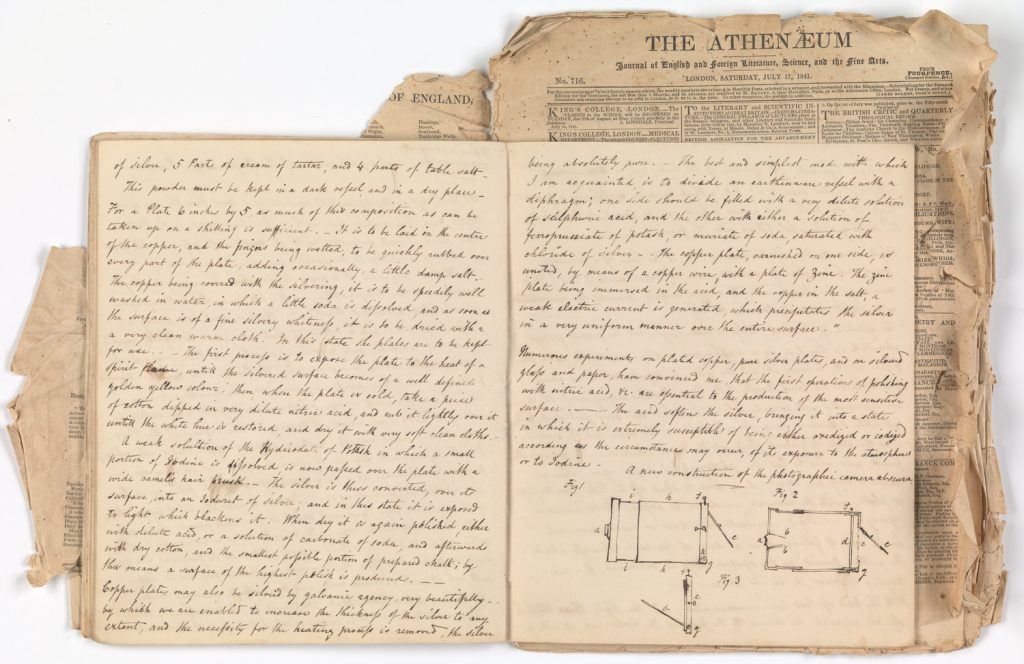
‘Star of Tasmania’ shipboard journal by Francis James Ashburner. Ref: NS7221/1/1 (Tasmanian Archives)
This item is the unpublished journal of 12-year-old Francis James Ashburner (1845-1934). Francis kept the journal from December 1859 to March 1860 on board the Star of Tasmania. His daily entries cover the 85 day voyage from Launceston to London via Cape Horn – commencing on 21 December 1859, and concluding on 17 March 1860. Francis records events such as the animals aboard the vessel, the sea-life, birds, passing ships, and activities undertaken on board. Two pages at the rear of the book contain repeated lines dated 21/03/1860 likely to have been written as a punishment. Francis James went on to serve in the Army, obtaining the rank of Lieutenant Colonel.
Francis’ father William Page Ashburner worked as a barrister and served as a commissioner of the peace before in 1836 taking up a grant of land at Sillwood, near Longford. Ashburner had previously been a successful merchant in India as well as Mayor of Bombay. The Ashburner family was prominent in India, with links to the British East India Company. William served as a Member of the Legislative Council from 1839-1844. The Allport Library and Museum of Fine Arts holds a sketchbook by William Page Ashburner created between 1811 and 1846, see FA861.
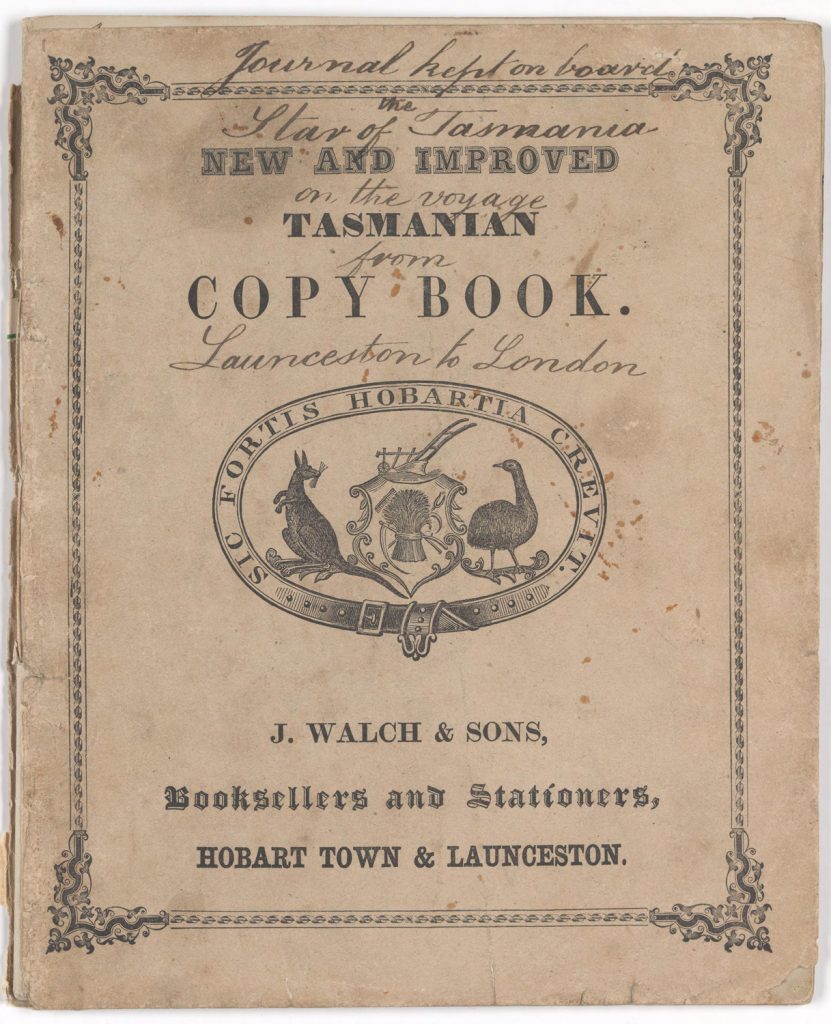
Journals of Separate Prison Wardens, c1860 Tasman Peninsula (Tasmanian Archives)
These convict records are journals of the prison wardens with an entry each night recording the names of the officer and constable on night duty, and whether they have reported all to be correct. The warden reports the result of his own tour of inspection, events of the day, particularly recalcitrant behaviour by prisoners, and notes the names of prisoners received and discharged. Journal transcripts were compiled by Ian Brand and appear in the ‘Brand papers : Tasman Peninsula’ Hobart, National Parks and Wildlife Service, 1983.
- Journal of warden G. Whittington (1860): Ref CON91/1/3
- Journal of warden J. Aylett (1863): Ref CON91/1/2
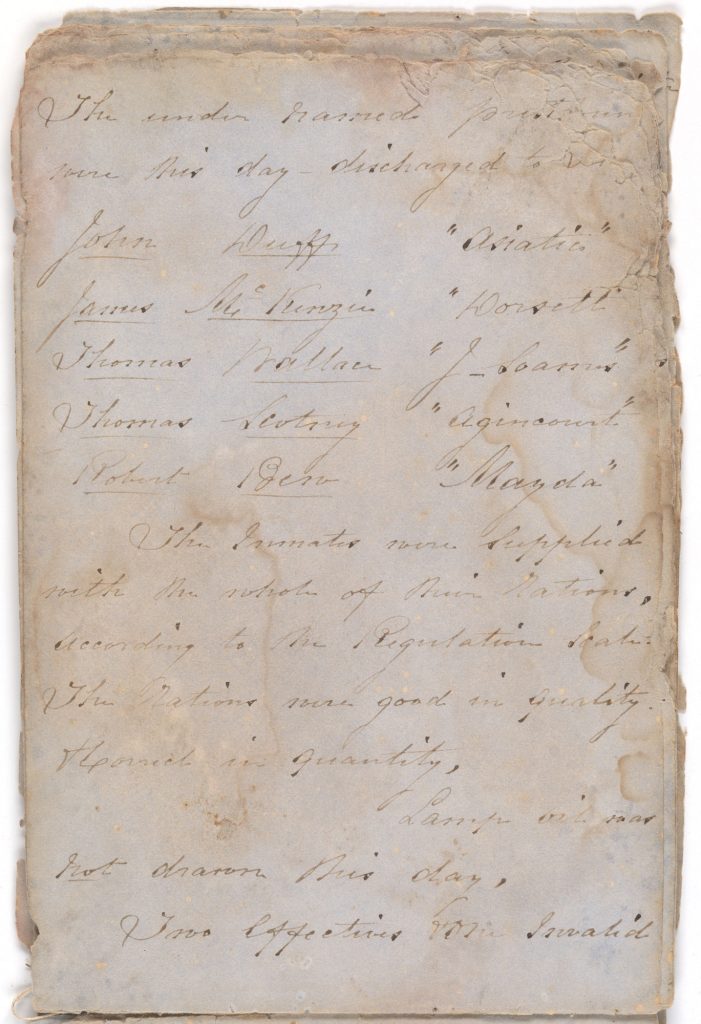
Descriptive Lists of Male and Female Convicts to Be Embarked for Van Diemen’s Land from Various Prisons in the United Kingdom, 1839-50 (Tasmanian Archives)
- Return of two female prisoners who were to embark on the Majestic 1939. Ref: CON114/1/1
- Female convicts embarked on the Majestic 1839 from Stafford Prison. Ref: CON114/1/2
- Female convicts embarked on the Angelina 1844 from Millbank Prison. Ref: CON114/1/3
- Male convicts embarked on the Equestrian 1844 from Millbank Prison. Ref: CON114/1/4
- Male convicts embarked on the Equestrian 1844 from Parkhurst Prison. Ref: CON114/1/5
- Supplementary list of male convicts embarked on the Equestrian 1844 from Parkhurst Prison. Ref: CON114/1/6
- Female convicts embarked on the Elizabeth and Henry 1847 from a prison. Ref: CON114/1/7
- Male Convicts embarked on the London 1851 from a prison. Ref: CON114/1/8

Convict credit and gratuity books, Tasman Peninsula 1865-68 (Tasmanian Archives)
Each page contains name of convict, ship arrived on, duties performed, signature of officer in charge and amount of earnings. They were filled out on a weekly basis. These records are part of the holdings of the Tasmanian Archives
- No.26 Miscellaneous. Ref: CON130/1/1
- No.34 Hospital. Ref: CON130/1/2
- No.37 Bush Sawyers and Splitters. Ref: CON130/1/3
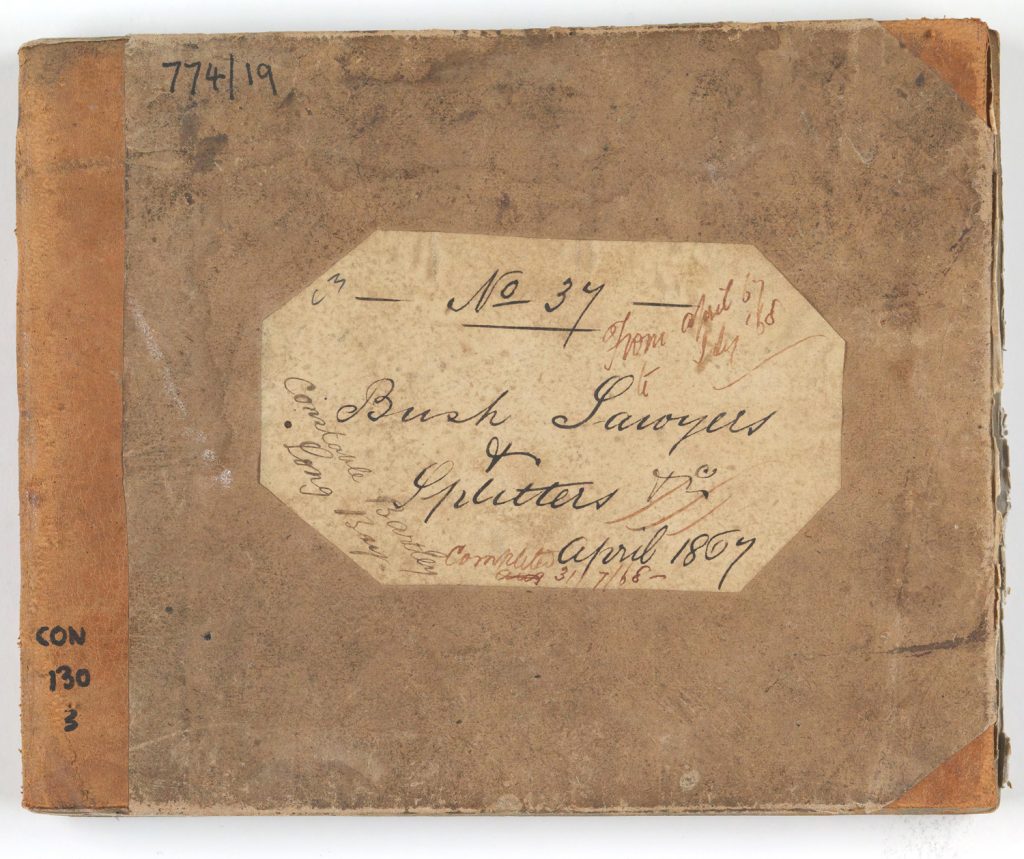
Convict credit and gratuity book – No.37 Bush Sawyers and Splitters. Ref: CON130/1/3 (Tasmanian Archives)
Register of Convicts for Whom Enquiries were Made (1850-68). Ref: GO121/1/1 (Tasmanian Archives)
Arranged alphabetically by name of convict, gives name of ship on which transported, address of enquirer, date letter received and date sent to Comptroller-General.
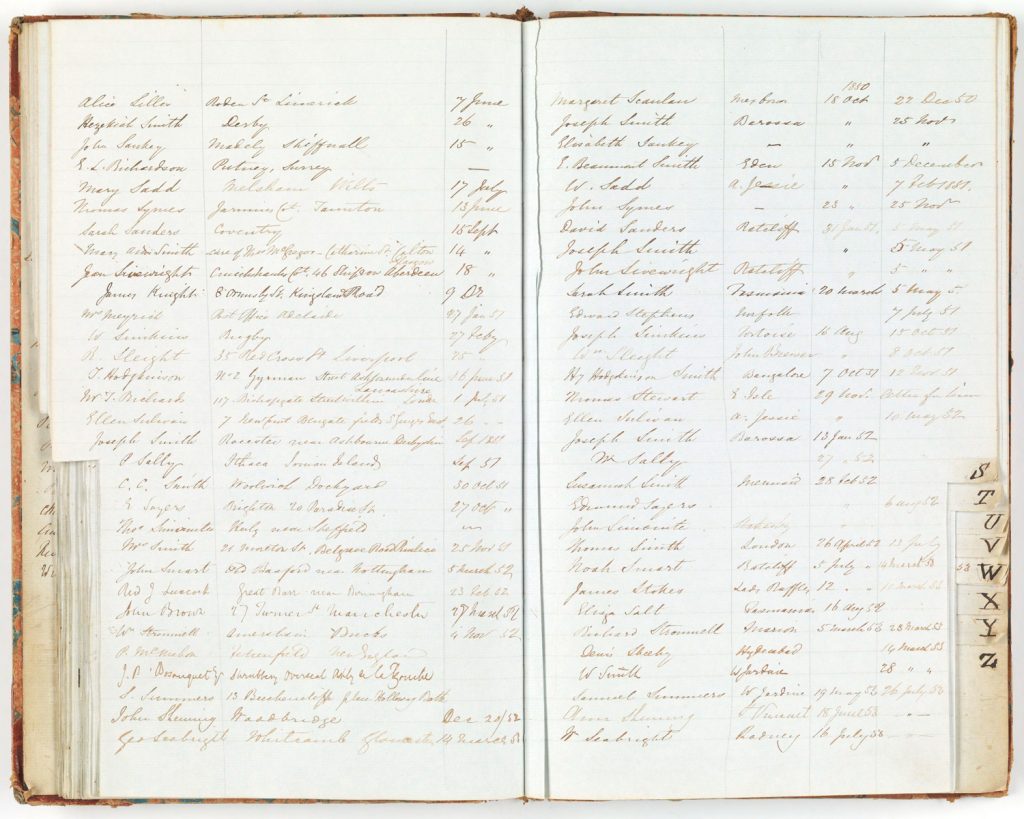
Registers and Records
1921 Tasmanian Birth Registers (Tasmanian Archives)
- RGD33/2/5, Launceston (1 – 965) and Beaconsfield to Deloraine (1 – 356)
- RGD33/2/6, Devonport to King Island (357 – 1295)
- RGD33/2/7, Latrobe to Richmond (1296 – 2388)
- RGD33/2/8, Ringarooma to Zeehan (2389 – 3351)
Female Admissions, Royal Derwent Hospital (1898-1903) Ref: AB365/1/13 (Tasmanian Archives)
Copies of Wills Recording Granting of Probate, 1868-1874. Ref: AD960/1/8, AD960/1/9 (Tasmanian Archives)
Images
Launceston Collection of Photographs of Ships, c1860-1970. Ref: LMSS761/1/1-490 (Tasmanian Archives)
This series contains images given to the Launceston Local Studies Collection by donors. These records are part of the holdings of the Tasmanian Archives.
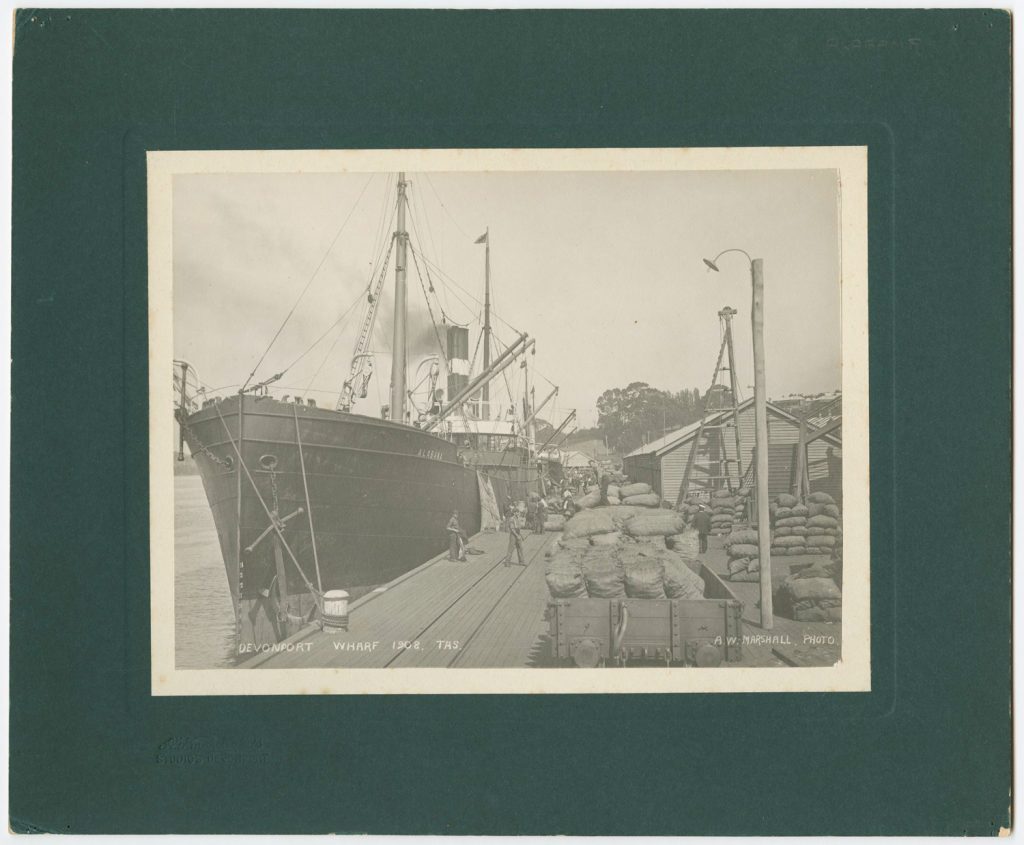
Daguerreotype and ambrotype portraits. Ref: NS5465/1/1-3 (Tasmanian Archives)
This series of unknown portraits are part of the Biggs and Anges family collections and include a wide range of photograph sizes and types (including framed tin photographs and others mounted on board). Abraham Edwin Biggs was a Hobart builder and contractor who married Eliza Coleman in 1822. The family emigrated to Tasmania in 1833. Biggs had close associations with the Methodist church. His eldest son, Alfred Barrett Biggs 1825 – 1900, was a teacher, accountant and inventor, notable for his work in astronomy and for the installation of the telephone in Tasmania. (Source: Lugton Family and Close Connections and Australian Dictionary of Biography website).
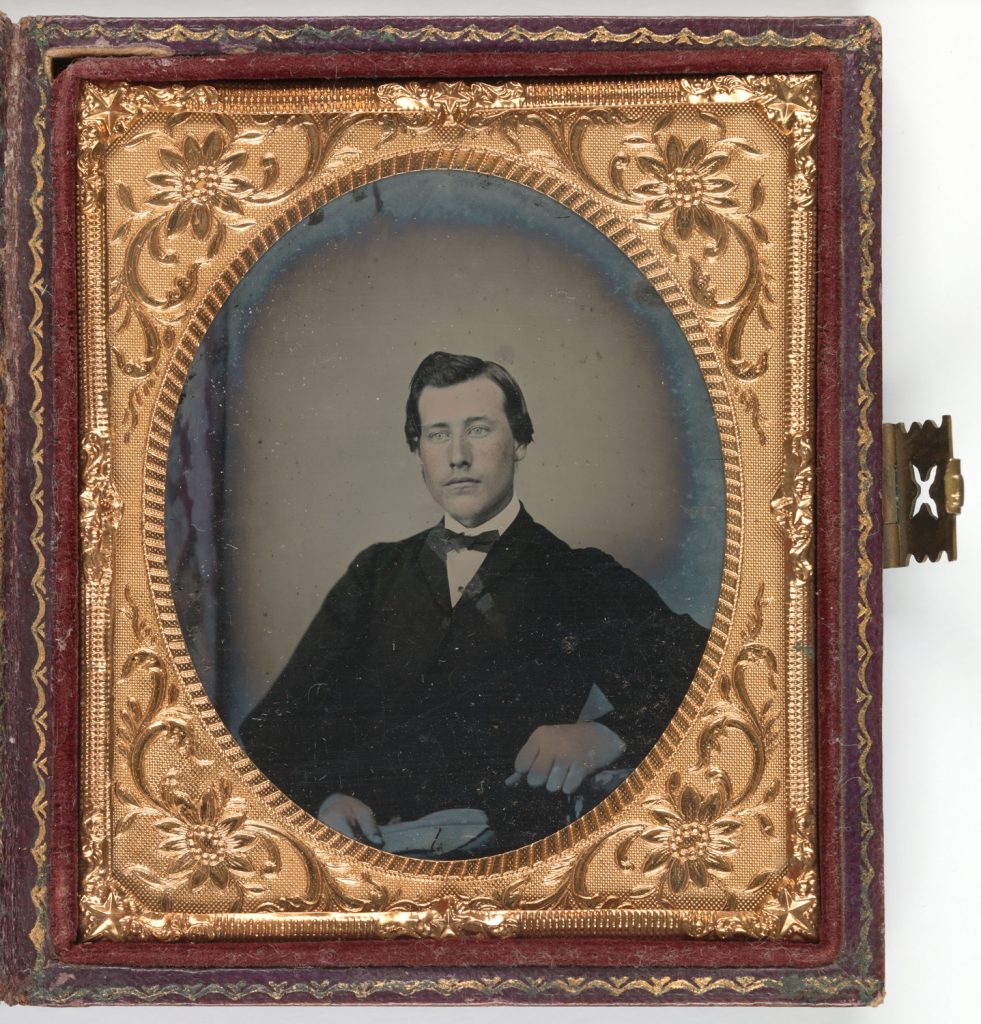
Hobart Town by Ensign Kemp from behind my quarters / W.H. Kemp (Allport Library and Museum of Fine Arts)

Artworks by Knud Geelmuyden Bull (Allport Library and Museum of Fine Arts)
Knud Geelmuyden Bull (1811 – 1889) was a Norwegian artist who was convicted for printing fake bank notes and deported from London in 1846.
“His conduct on the voyage out was reported as exemplary. In June 1847 Bull was transferred to Van Diemen’s Land and sent to the Saltwater River probation station. In May 1849 he came to Hobart Town and the following year was inland, teaching at Mrs Rogers’s seminary at Bagdad. On 8 December 1850 Bull absconded to Melbourne from Hobart Town. His recapture was reported in the Hobarton Guardian of 22 January 1851:
A respectable looking man, who gave the name of Thomas Evans, but whose real name is Canute Bull (a Dane) was on Thursday committed to gaol for the purpose of being forwarded to Van Diemen’s Land (from Port Phillip) by the first opportunity, as a runaway prisoner of the Crown. A person named Simpson, Chief Constable at the Hopkins, proved that he had known the prisoner, who was an artist by profession, both at Hobart and Norfolk Island, at which time he was a prisoner of the Crown and was still so, having been transported for a period of fourteen years. For the defence a certificate of freedom was produced in the name of Thomas Evans, but it had evidently been altered, and was altogether such a suspicious looking document that the Justice paid no attention to it… Bull is known for his Tasmanian landscapes, which he seems to have begun painting only after April 1851 when assigned to another oil landscape painter, Rev. J.G. Medland , who lived at Boa Vista, Hobart.
On 16 March 1852, Bull received his ticket of leave. In 1854 he gave drawing lessons at the Hobart Town Mechanics Institute and at Trinity School House. He was drawing master at Alexander Cairnduff’s Hobart Town Academy in 1855. He advertised his willingness to take ‘Daguerrian Portraits’ in the Tasmanian Daily News during April 1856, although no surviving daguerreotypes have been identified. He made his name with views of Hobart Town painted between 1853 and 1856. ” (Source: Design & Art Australia Online)
Bull left Tasmania in about 1856 and moved to New South Wales, where he lived for the rest of his life. Selected artworks by Bull can be viewed at the Allport Library and Museum of Fine Arts Colonial Galley and online. More works can also be viewed at the Tasmanian Museum and Art Galley.

Mount Lyell mines map compiled and edited by Macnamara Russell,1896 (Tasmaniana Library)
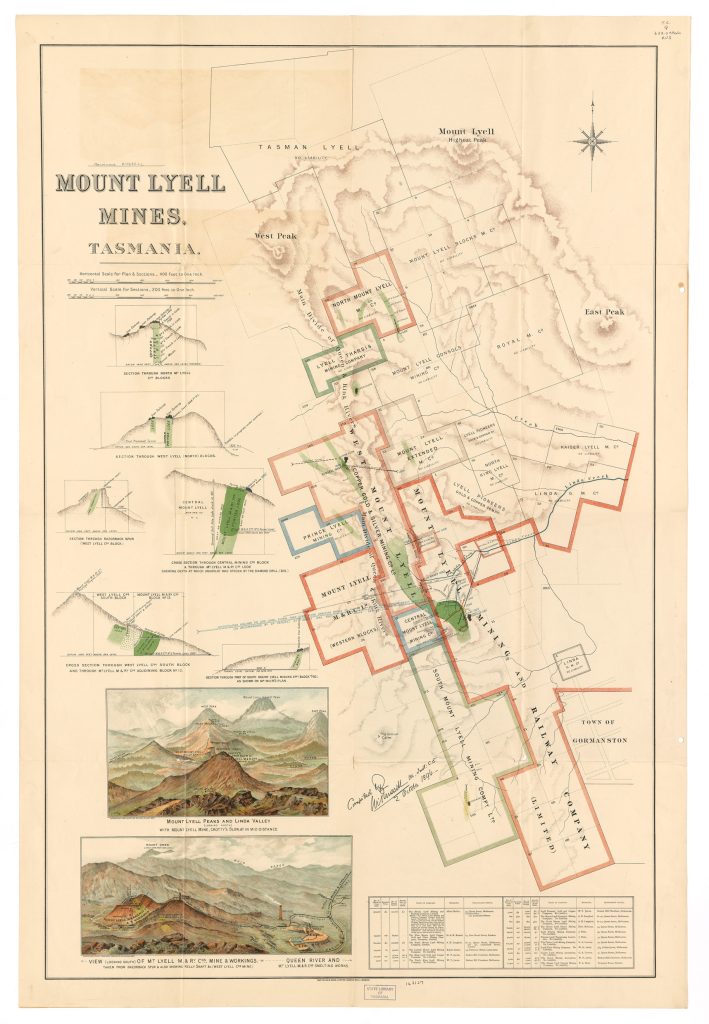
Mount Wellington from Bellerive
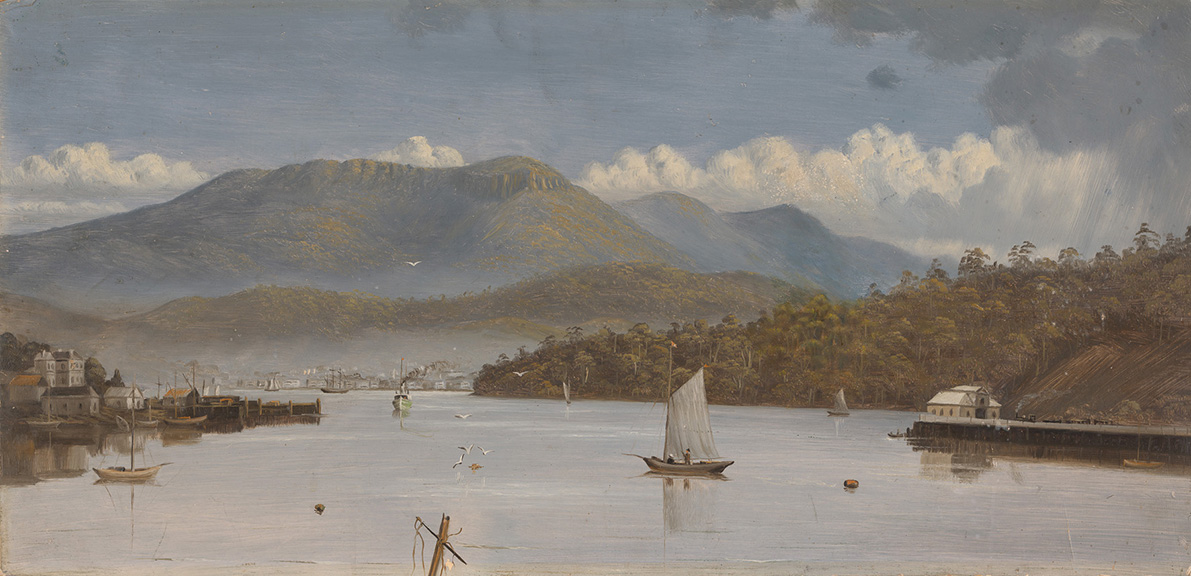
Oil painting on board; 28 x 60 cm within frame. Unsigned and undated. Possibly by F.J. Lloyd as a similar work by him was auctioned in London on 22 October 1980 (W.L. Crowther Library)
Glass plate negatives from A A Rollings Collection. Ref: NS1553/2/1 to 34 (Tasmanian Archives)
A A “Arch” Rollings was born in Sorell (Forcett) to farmers James Rollings and Martha Wiggins in 1865. Arch was appointed post-master and savings bank agent at Forcett in 1896. He is also noted as playing in the Forcett Football Club and later in the Carnarvon Team. By 1898 Rollings had moved to professional photography. With Harry Dart he operated a studio in Harrington Street ‘Dart and Rollings’. In the early 1900s until 1906 he had a partnership with H E Howard. In 1906 Rollings opened a drapery and photographic business in Sorell. He was in business until 1924 at his shop at 21 Gordon Street. The most well know photographs taken by A A Rollings are those of Horace Watson recording the voice of Fanny Cochrane Smith in 1903. Photographs taken by Arch Rollings can be found in series where he is listed as the creator, as well as in general miscellaneous photographic series including PH30 and PH40.
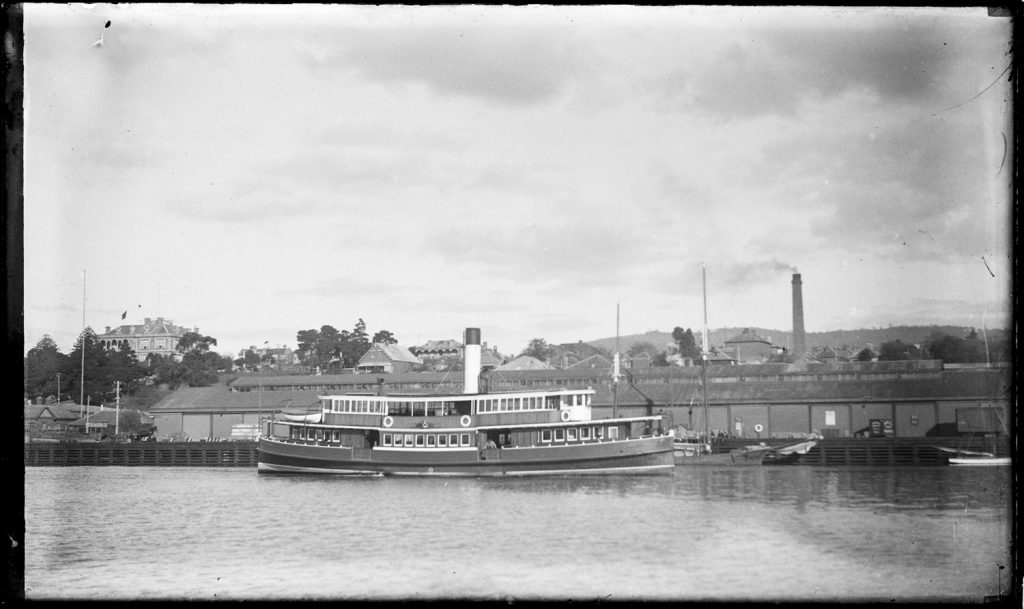
A note about permissions
We love it when people use our resources. If you’d like to use our images or films in your book, manuscript, documentary, blog, or social media, please do make sure that you ask permission first. You can find out how to do this on our Writers and Publishers page (which has a link to the permission form).
Please feel free to ring us for advice or help. You can find our telephone numbers and chat service on our Help Desk.


What information do the convict records in the ‘Brand papers: Tasman Peninsula’ journals provide about prison life and warden duties?
Regard IT Telkom
That is a good question. The warden’s journals tell us what the day-to-day activities of the warden looked like, and give an indication of what the authorities were interested in. They indicate that inspections of the cells were made regularly to ensure that the cells were secure and clean. Maintenance of the ‘watch clock’ indicates that priority was given to keeping time in the gaol. The record indicates that the inmates were under close supervision. Any unruly behaviour was noted. They also recorded religious observances and any problems, such as issues with the quality of rations.